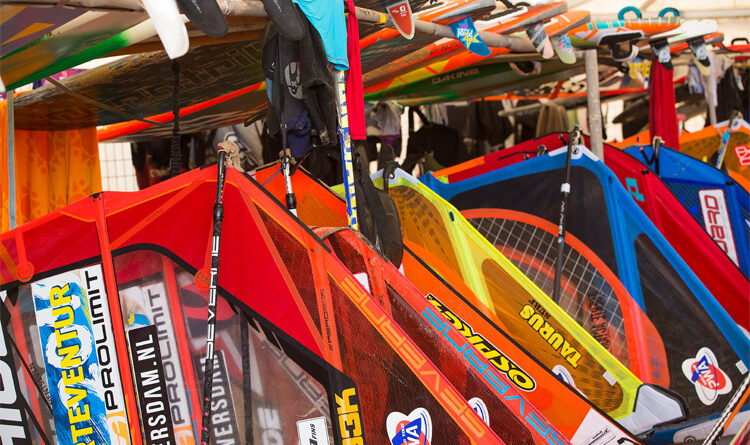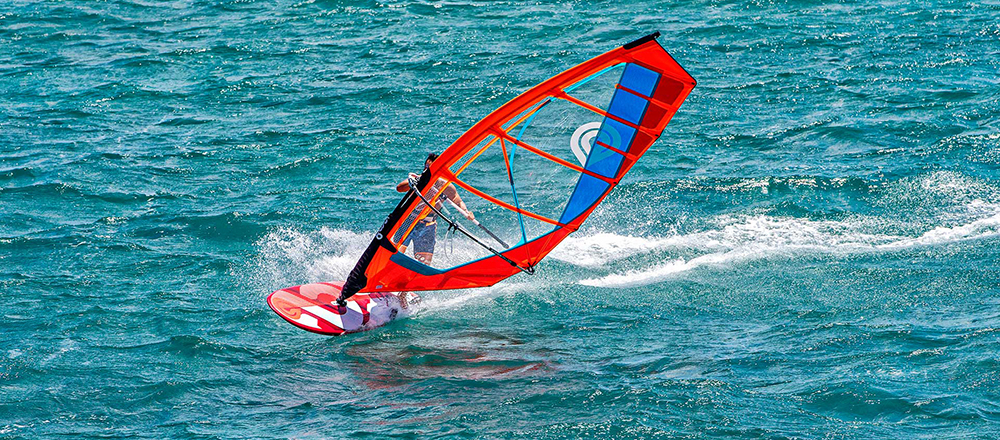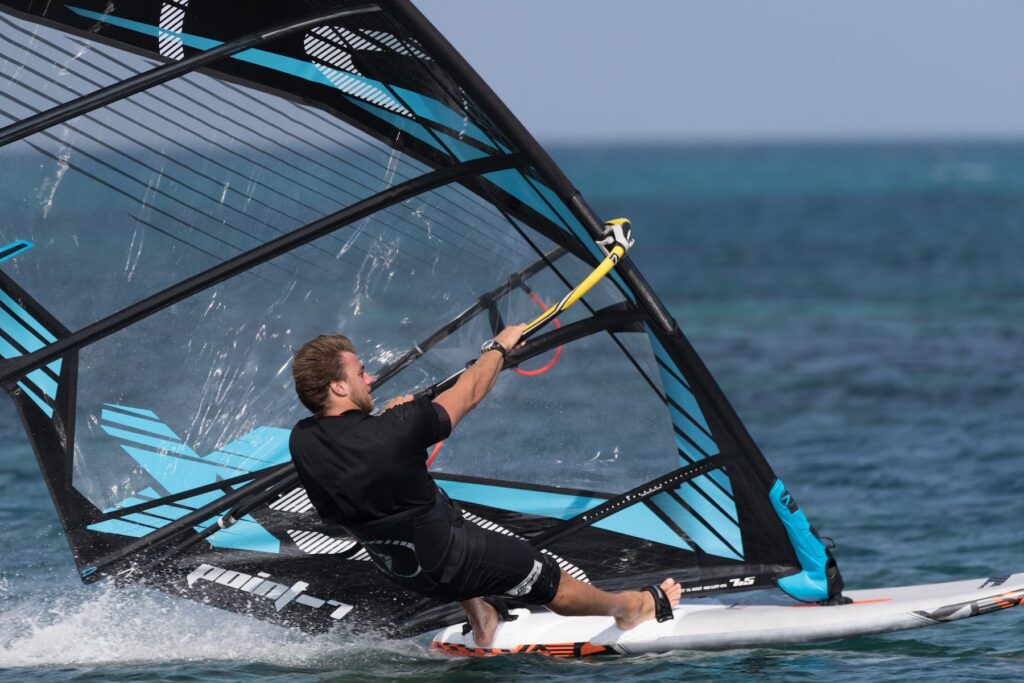
You rely on your windsurfing boom to help you navigate the waves and catch the wind effortlessly. But without proper care and storage, this vital piece of equipment can easily become damaged or deteriorate over time. In this article, discover essential tips and techniques for maintaining your windsurfing boom, ensuring its longevity and optimal performance. From cleaning and lubricating to protecting it from sunlight and extreme temperatures, we’ll guide you on how to keep your boom in top shape so you can continue enjoying the exhilarating sport of windsurfing with ease and confidence.

This image is property of www.surfertoday.com.
1. Cleaning the Windsurfing Boom
1.1 Removing Salt and Dirt
Cleaning your windsurfing boom regularly is essential to maintain its performance and prolong its lifespan. Start by removing any salt and dirt that may have accumulated on the boom. You can do this by rinsing it thoroughly with fresh water after each session in the water. Use a hose or a bucket of water to ensure that all the saltwater and dirt are washed away.
1.2 Using Mild Soap and Water
For a more thorough cleaning, you can use a mild soap and water solution. Mix a small amount of mild detergent with warm water in a bucket. Dip a soft sponge or cloth into the soapy solution and gently scrub the surface of the boom, paying close attention to removing any stubborn dirt or stains. Rinse the boom with fresh water to remove any soap residue.
1.3 Using Vinegar Solution
If your boom has stubborn salt deposits or mineral buildup, you can create a vinegar solution to tackle these issues. Mix equal parts of white vinegar and water in a spray bottle. Spray the solution onto the affected areas of the boom and let it sit for a few minutes. Then, scrub the boom gently with a soft sponge or cloth to remove the deposits. Rinse the boom thoroughly with fresh water afterward.
1.4 Avoiding Harsh Chemicals
When cleaning your windsurfing boom, it is important to avoid using harsh chemicals or abrasive cleaners. These can damage the surface of the boom, causing it to lose its strength and integrity. Stick to mild soaps, detergents, and vinegar solutions to ensure that your boom stays in top condition.
1.5 Drying Thoroughly
After cleaning, make sure to dry your windsurfing boom thoroughly before storing it. Moisture can lead to corrosion and mold growth, both of which can damage the boom. Wipe the boom with a clean, dry cloth to remove any excess water, and then let it air dry completely. Avoid storing a wet boom as this can lead to unpleasant odors and potential damage.
2. Inspecting for Damage
2.1 Checking for Cracks or Splinters
Regularly inspect your windsurfing boom for any signs of damage. Start by checking for cracks or splinters along the length of the boom. These can weaken the structural integrity of the boom and compromise its performance and safety. If you notice any cracks or splinters, it is essential to address them promptly to prevent further damage.
2.2 Examining the Clamps
The clamps on your windsurfing boom play a crucial role in securing it to the mast and adjusting the length. Inspect the clamps thoroughly for any signs of wear, corrosion, or damage. Check that they are still functioning properly and holding the boom securely in place. If you notice any issues with the clamps, it is important to address them to ensure your safety while windsurfing.
2.3 Inspecting the Tube
Take a close look at the tube of your windsurfing boom. Look for any dents, bends, or other deformities that may have occurred during use. These can affect the integrity of the boom and its ability to withstand the forces exerted on it while windsurfing. If you notice any significant damage to the tube, it may be necessary to replace it.
2.4 Assessing the Grip
The grip of your windsurfing boom is essential for maintaining control and comfort while windsurfing. Check the grip for any signs of wear or degradation, such as cracks, tears, or loss of traction. A damaged grip can make it difficult to hold onto the boom properly, impacting your performance on the water. If the grip shows signs of damage, consider replacing it for optimal safety and comfort.
3. Maintaining the Hardware
3.1 Lubricating the Clamps
To ensure that the clamps on your windsurfing boom remain in good working condition, it is important to lubricate them regularly. Use a silicone-based lubricant or a specific boom clamp lubricant to apply a thin layer of lubrication to the clamps. This will help prevent corrosion and ensure smooth and secure adjustment of the boom length.
3.2 Tightening Loose Screws
Over time, the screws on your windsurfing boom may become loose due to vibrations and regular use. Check all the screws and fittings on your boom and tighten them if necessary. Use a suitable screwdriver or Allen key to ensure a snug fit. Loose screws can affect the stability and performance of your boom, so regular tightening is crucial.
3.3 Replacing Damaged Parts
If you discover any significant damage to your windsurfing boom during inspection, it may be necessary to replace certain parts. Cracked tubes, damaged clamps, or worn-out grips should be replaced to ensure the safety and functionality of your boom. Consult with a professional or contact the manufacturer to identify the appropriate replacement parts and ensure proper installation.
3.4 Storing Spare Hardware
To be prepared for any unexpected damage or breakage, it is always a good idea to have spare hardware on hand. Keep extra screws, clamps, and other essential parts in a secure and easily accessible location. This way, if you encounter any issues with your windsurfing boom, you can quickly replace the damaged parts and get back on the water.
4. Avoiding Exposure to Extreme Conditions
4.1 Protecting from Direct Sunlight
Direct sunlight can cause damage to your windsurfing boom over time. Prolonged exposure to UV rays can weaken the materials and fade the color. Whenever possible, store your boom in a shaded area or use a protective cover to shield it from direct sunlight when not in use. This will help to extend the lifespan of your boom and maintain its overall quality.
4.2 Preventing Exposure to Rain
While windsurfing in the rain may be unavoidable at times, it is important to ensure that your boom does not remain wet for extended periods. After a session in the rain, make sure to dry your boom thoroughly before storing it. Moisture can lead to corrosion and other damage, so wiping it down and allowing it to dry completely is essential.
4.3 Shielding from Extreme Temperatures
Extreme temperatures can have a detrimental effect on the materials of your windsurfing boom. Avoid leaving your boom exposed to extreme heat or cold for prolonged periods. High temperatures can cause warping or melting, while freezing temperatures can make the materials more brittle and prone to damage. Store your boom in a climate-controlled environment whenever possible.
4.4 Avoiding Saltwater Corrosion
Saltwater can be corrosive to the materials of your windsurfing boom. After each session in saltwater, rinse your boom thoroughly with fresh water to remove any salt residue. This will help prevent corrosion and prolong the life of your boom. Additionally, consider using a protective wax or coating specifically designed for watersports equipment to add an extra layer of protection.

This image is property of boardsportscalifornia.com.
5. Proper Storage Techniques
5.1 Detaching from Windsurfing Rig
When storing your windsurfing boom, it is important to detach it from the windsurfing rig. Remove the boom from the mast and sail, ensuring that all attachments are properly disconnected. This will prevent unnecessary stress on the boom and ensure that it remains in optimal condition during storage.
5.2 Choosing a Suitable Storage Area
Select a suitable storage area for your windsurfing boom. Ideally, choose a cool, dry, and well-ventilated space to minimize the risk of moisture and temperature-related damage. Consider using a dedicated storage rack or hooks to keep your boom off the ground and away from potential hazards that could cause accidental damage.
5.3 Hanging or Laying Flat
Decide whether to hang or lay your windsurfing boom flat during storage. Hanging the boom can help maintain its shape and prevent any bending or warping. However, ensure that the boom is securely hung to avoid accidental falls or damage. Alternatively, laying the boom flat on a padded surface can also be a suitable option if space is limited or hanging is not possible.
5.4 Covering the Boom
To provide an extra layer of protection during storage, consider covering your windsurfing boom with a protective cover or bag. This will safeguard it from dust, dirt, and potential accidental damage. Ensure that the cover is breathable to prevent moisture buildup and remove any moisture before covering the boom for extended periods.
6. Transporting the Windsurfing Boom
6.1 Using a Protective Bag or Sleeve
When transporting your windsurfing boom, use a protective bag or sleeve to prevent damage during transit. These specialized bags or sleeves provide cushioning and protect the boom from scratches, impacts, and exposure to external elements. Make sure the boom is securely placed inside the bag or sleeve and properly fastened to prevent any movement.
6.2 Securing in a Roof Rack or Board Bag
If you are traveling with your windsurfing gear and need to transport the boom on a roof rack or inside a board bag, ensure it is safely secured. Use appropriate straps or tie-downs to firmly attach the boom to the roof rack or inside the board bag, preventing any shifting or movement during transportation. Regularly check the straps or tie-downs to ensure they remain tight throughout the journey.

This image is property of boardsportscalifornia.com.
7. Professionals for Repair and Maintenance
7.1 Consulting a Windsurfing Expert
If you are unsure about any aspect of caring for or maintaining your windsurfing boom, it is always best to consult a windsurfing expert or professional. They can provide valuable advice specific to your equipment and help address any concerns or questions you may have. They can also guide you through the proper maintenance steps and techniques for your specific boom model.
7.2 Seeking Professional Repair Services
In the event of significant damage or issues with your windsurfing boom, it may be necessary to seek professional repair services. Professional repair technicians have the expertise and tools to properly assess and repair your boom, ensuring it is safe and functional. Contact your local windsurfing shop or repair service to discuss the repairs needed and arrange for professional assistance.
8. Safety Precautions
8.1 Wearing Protective Gloves
When inspecting or handling your windsurfing boom, it is recommended to wear protective gloves. Gloves can provide added grip and protect your hands from potential splinters, sharp edges, or rough surfaces. Choose gloves that are suitable for water sports activities and offer the necessary dexterity and protection.
8.2 Disconnecting from Rigging
Before performing any maintenance or storage procedures on your windsurfing boom, always ensure that it is properly disconnected from the rigging. This includes detaching it from the mast, sail, and any other attachments. By disconnecting the boom, you minimize the risk of accidental entanglement or injury.
8.3 Storing Out of Reach from Children
To ensure the safety of children, store your windsurfing boom out of their reach. Children may be curious and unintentionally cause damage to the boom or themselves if they are allowed to access it without supervision. Keep your boom stored in a secure area where children cannot easily reach or interfere with it.
8.4 Properly Attaching to the Sail
When setting up your windsurfing boom, pay attention to properly attaching it to the sail. Follow the manufacturer’s instructions or seek guidance from a windsurfing expert to ensure the boom is securely connected. A loose or improperly attached boom can cause issues while windsurfing and compromise your safety on the water.

This image is property of point-7.com.
9. Regular Inspection Schedule
9.1 Establishing a Routine
Establishing a regular inspection routine for your windsurfing boom is important to detect any potential issues early on. Set a schedule for inspections, whether it be after each session, once a month, or at the beginning and end of each windsurfing season. Consistency is key to maintaining the condition and performance of your boom.
9.2 Checking After Each Session
After each windsurfing session, take a few moments to inspect your windsurfing boom. Look for any visible damage, such as cracks, splinters, or signs of wear. Pay close attention to the clamps, tube, and grip. Address any issues promptly, and if necessary, clean and dry the boom before storing it.
9.3 Frequent Evaluation during Usage
While using your windsurfing boom, pay attention to any changes in its functionality or feel. If you notice any slipping, twisting, or difficulty in adjusting or extending the boom, it may be a sign of underlying issues. Stop using the boom immediately and thoroughly inspect it to identify and address the problem.
9.4 Assessing during Annual Maintenance
Alongside regular inspections, it is recommended to perform more thorough assessments of your windsurfing boom during annual maintenance. This may involve disassembling the boom to inspect all components, checking for hidden damage, and performing any necessary repairs or replacements. Consult with a professional or follow the manufacturer’s guidelines for specific maintenance procedures.
10. Troubleshooting Common Issues
10.1 Boom Slipping or Twisting
If you experience your windsurfing boom slipping or twisting while in use, it could indicate a problem with the clamps or the grip. Check the clamps to ensure they are secure and functioning properly. If the grip has lost traction, consider replacing it with a new one that provides a better grip surface.
10.2 Difficult to Adjust or Extend
If you find it difficult to adjust or extend your windsurfing boom, there may be issues with the clamps or the adjustment mechanism. Clean and lubricate the clamps to ensure smooth operation. If the problem persists, consult a professional or contact the manufacturer for further guidance.
10.3 Grip Losing Traction
A grip that loses traction can make it challenging to maintain control of your windsurfing boom. If you notice the grip becoming slippery or worn, it may be time to replace it. Choose a high-quality replacement grip that offers good traction and durability.
10.4 Clamps Not Holding Firmly
If the clamps on your windsurfing boom are not holding firmly, it may be due to wear, corrosion, or damage. Thoroughly clean and inspect the clamps for any underlying issues. Lubricate them properly, and if necessary, consider replacing the clamps with new ones to ensure a secure and reliable connection.
Properly caring for and storing your windsurfing boom is crucial for maintaining its performance, longevity, and safety. By following these tips and incorporating them into your regular windsurfing routine, you can enjoy many seasons of exciting and safe windsurfing adventures. Remember to consult professionals for any major repairs or concerns and always prioritize safety while enjoying this exhilarating water sport.

This image is property of porch.com.






